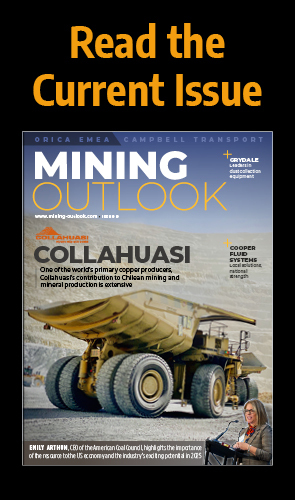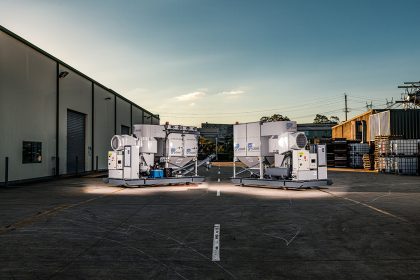As a critical yet often forgotten metal, tin is essential for a sustainable world. Bill Scotting, CEO of First Tin, examines the mineral’s supply and demand, which is driving the need for new mines.
A CRITICAL METAL FOR THE FUTURE
Tin prices have rallied this year, positioning it as one of the top-performing metals and shining a light on an often overlooked but essential metal. Long-term structural changes are driving tin’s growing importance as a critical mineral for the future. Strong demand across multiple sectors and constrained supply have resulted in global shortages, underscored by the necessity for new tin mines.
A DIVERSITY OF USES WITH SIGNIFICANT GROWTH
One of the oldest metals used, tin remains present in modern life. Its softness and relatively low melting point enable easy processing and forming. Around 50 percent of tin is used in solder today as a connector for electrical components. It is integral to many technologies, such as electronics, printed circuit boards (PCBs), semiconductors, and renewable energy systems. Small but critical amounts of tin can be found in many everyday items that we take for granted, such as mobile phones, iPads, and laptops, as well as in larger household appliances such as televisions, washing machines, and refrigerators.
Chemical stabilisers, which contain up to 20 percent tin, protect against heat damage in the manufacturing process for PVC and plastics and are the second largest use of tin. Tinplate is the third largest application, with tin commonly used in packaging for the food and beverage sector.
Smaller but important quantities of tin are used in batteries, copper alloys, and glass manufacturing. Tin is used in both lead-acid and lithium-ion batteries, where its properties provide corrosion resistance and improve battery performance and charging capacity. Copper tin alloys or bronzes are well known for their corrosion resistance, strength, and ductility and are used in springs, bolts, valves, and fittings. Flat glass, widely used in buildings and cars, is made from floating molten glass on a molten tin bed during float glass production.
TIN TRANSITION
More recently, tin demand has surged due to the explosive growth in solar energy deployment, where it is used in the solar ribbons to connect solar cells, junction boxes, and photovoltaic (PV) electronics. The growing electric vehicle (EV) market also boosts tin demand because EVs require more power electronics, wiring, and connectors than traditional internal combustion engine vehicles, as well as the infrastructure for charging stations.
Tin is increasingly recognised as pivotal in the energy transition and digital revolution, making it a critical metal for the future. Advancements in electronic devices, robotics, 5G, data warehouses, and artificial intelligence (AI) are expected to further drive the heightened demand for tin. Additionally, the anticipated rapid growth in energy demand from data centres will necessitate more renewable energy and expanded distribution infrastructure, further boosting tin demand.
The International Tin Association forecasts refined tin use to be close to 500,000 tonnes by 2030, an increase of over 30 percent. Looking further ahead, researchers continue to identify new applications such as microchiplets for quantum computing and sodium-ion batteries.
Tin’s characteristics and applications have rightly seen it referred to as the “hidden gem” and the “glue in electronics.”

FACING MAJOR SUPPLY CONSTRAINTS
While the demand outlook is increasingly robust, primary supply has stagnated, with major producers facing various challenges, including diminishing reserves and operational disruptions. A looming supply deficit and supply chain vulnerabilities have seen tin classified as a critical or strategic mineral in numerous jurisdictions around the world.
Primary tin supply is highly concentrated, with approximately 65 percent coming from just three countries – China, Indonesia, and Myanmar, and a further 28 percent from South America and the Democratic Republic of Congo (DRC). In 2023, several disruptions impacted supply, including declining feedstocks and grades in China, delayed licenses, operational issues with offshore dredging in Indonesia, conflict in Myanmar leading to suspensions of mining activities in Wa state, and civil disruptions in Peru. More recently, the DRC has seen renewed unrest.
With the existing supply not expanding and stocks declining long-term, growing demand will lead to a deficit unless a new, sustainable supply becomes available. However, the pipeline of new tin projects is thin due to subdued prices and a lack of exploration and development over the past couple of decades. In the short term, the major new supply source is Alphamin in the DRC, which is ramping up a major expansion at Mpama South.
FUTURE FIRST
First Tin, my company, has recently published a Definitive Feasibility Study for our Taronga development in Australia, which will be in production in late 2026 at the earliest. Beyond this are several projects at conceptual and pre-feasibility stages of development, which may enter production later this decade. Therefore, as demand cyclically recovers and structurally grows, the forecast is for an increasing supply deficit with resultant higher prices to enable new supply.
Billions of dollars and euros of investment have been announced for the energy transition and new digital technology in the US, the EU, and other regions. This highlights the need for conflict-free, sustainable supply chains for critical and strategic minerals, including tin.
First Tin is committed to the environmentally sensitive development of our 100 percent-owned advanced hard rock tin projects in the low-risk jurisdictions of Australia and Germany. With our strategic approach and business model, we are poised to unlock the significant value within our tin assets as we deliver an answer to the chronic supply chain issues facing many industrial tin users.






























